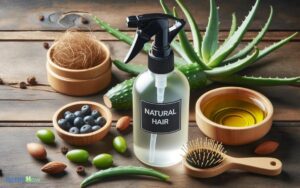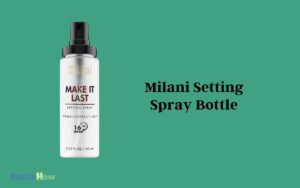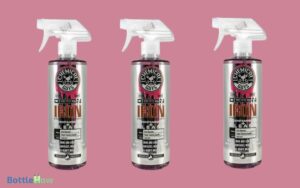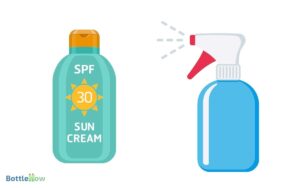How to Remove Bottle From Spray Mop
To remove the bottle from your spray mop, start by ensuring the device is turned off and unplugged for safety. Next, locate the release mechanism, which is often found near the base of the handle or on the body of the mop. Familiarize yourself with the specific type of release your mop uses by checking for any markings or guidelines. Gently handle the release, usually a button or lever, and carefully detach the bottle. If you encounter resistance, double-check for any locks or additional mechanisms. Once it’s released, inspect and clean the bottle before reattaching. Following these steps will help you maintain your mop in excellent condition.
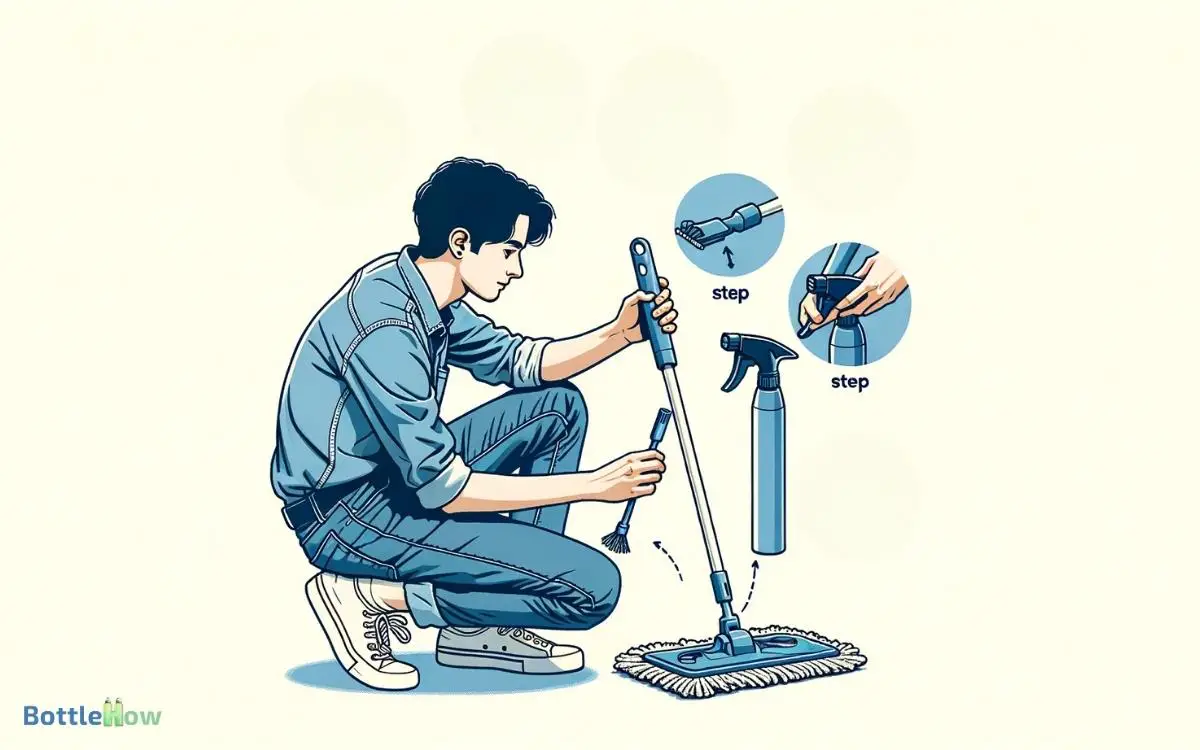
Key Takeaways
Understanding Spray Mop
A Spray Mop is a cleaning tool designed to simplify floor maintenance by combining a mop and a spray mechanism in one device.
It features a built-in spray system that dispenses cleaning solution directly onto the floor with the press of a trigger, eliminating the need for a separate bucket. This makes cleaning faster and more convenient.
The Spray Mop typically has a removable, washable microfiber pad that effectively picks up dirt and grime, making it suitable for various floor types, including hardwood, tile, laminate, and vinyl.
The ergonomic handle provides a comfortable grip, and the swivel head allows for easy maneuverability around furniture and tight spaces.
Identify Your Spray Mop Model
Before you attempt to remove the bottle from your spray mop, accurately identifying the model you own is crucial. Different models feature unique mechanisms and disassembly methods, so knowing your mop’s specifics streamlines the process and prevents damage.
Start by locating the manufacturer’s label, usually found on the handle or near the base of the unit. This label should provide the model number and possibly a customer service contact.
If the label’s worn off, you might find the model number printed directly on the bottle or underside of the mop.
Once you’ve got this information, you can refer to the user manual or the manufacturer’s website for detailed instructions specific to your model, ensuring you’re equipped to serve efficiently and effectively.
Gather Necessary Tools
Once you’ve identified your spray mop model, it’s time to assemble the tools you’ll need for the bottle removal process. Preparing effectively guarantees you can manage the task efficiently, helping others maintain their cleaning equipment with ease.
Here’s what you’ll likely need:
- Flat-head Screwdriver: To gently pry open any clips or levers securing the bottle.
- Pliers: In case the bottle is tightly fitted or if you need to grip small parts.
- Soft Cloth: To protect the mop’s finish while you work.
- Gloves: To make sure you don’t hurt your hands or get them dirty during the process.
With these tools at hand, you’ll be well-prepared to serve by maintaining the spray mop effectively.
Turn Off and Unplug Mop
Before you remove the bottle from your spray mop, it’s important to prioritize your safety by turning off and unplugging the device.
- First, locate the power button on your mop and press it to shut off the power; this will help prevent any accidental activation while you’re working.
- Next, carefully disconnect the mop from the electrical outlet, confirming that no power is flowing to the unit.
Safety Precautions
Make sure you turn off and unplug your spray mop to prevent any electrical accidents during the removal of the bottle. Working with any appliance that’s still connected to power can be hazardous.
Remember, your safety is paramount, and taking these precautions not only protects you but also ensures the longevity of your mop.
Here are four important steps to follow:
- Confirm Power Off: Double-check that the power button is in the off position.
- Remove Plug: Gently pull the plug from the socket.
- Check for Moisture: Ensure the area around the outlet and the mop’s plug is dry.
- Secure the Cord: Coil the power cord neatly to avoid any trip hazards.
Power Disconnect Steps
Make sure you turn off and unplug your spray mop from the electrical outlet to safely begin any maintenance or bottle removal tasks.
- First, locate the power button, typically found on the handle or body of your mop. Press it firmly to make certain the device is powered down.
- Next, gently pull the plug from the wall socket. It’s important to handle the cord by the plug itself and not tug on the cord, which can damage the wire or connection.
Depressurize the Spray Mechanism
To safely depressurize the spray mechanism, first make sure that the mop’s trigger is fully released and held in that position for a few seconds.
This ensures that any residual pressure within the spray system is gradually released, preventing any sudden spray or leaks during the removal process.
Here are the steps you’ll follow:
- Confirm the mop is in a stable position – Place the mop upright on a flat surface to prevent any accidental spills or damage.
- Check for any obstructions – Verify that nothing is blocking the spray nozzle or hose.
- Press and hold the trigger – Continuously press the trigger to release all the air and liquid inside.
- Wipe the nozzle – Use a clean cloth to gently wipe the nozzle, removing any residual moisture or debris.
Locate Release Mechanism
After depressurizing the spray mechanism, your next step is to locate the release mechanism that allows you to remove the bottle from the spray mop. Once you have identified the release mechanism, press or slide it according to the manufacturer’s instructions to detach the bottle carefully. Be sure to hold the bottle upright to prevent any remaining liquid from spilling. If you’re also looking for tips on how to remove perfume from bottle, consider rinsing it with warm water and mild soap before repurposing or refilling it.
This is typically found near the base of the handle or on the body of the mop itself. It’s often a button, lever, or latch that you’ll need to press, lift, or slide.
You’ll want to familiarize yourself with the specific type of release your mop uses. Look for any markings or instructions printed directly on the mop they’re there to guide you.
Handling the release mechanism with caution ensures that you can serve efficiently without causing damage to the mop.
Make sure your hands are dry to avoid slipping while you work.
Remove Bottle Carefully
Once you’ve engaged the release mechanism, gently pull the bottle downward to detach it from the mop’s body. It’s important to handle the bottle with care to prevent any spills or damage.
Here’s how you can guarantee a smooth removal every time:
- Stabilize the Mop: Hold the mop handle firmly to keep it steady while you detach the bottle.
- Support the Bottle: Place your other hand under the bottle as you pull it down to support its weight.
- Slow and Steady: Avoid jerking the bottle out. Pull down slowly and evenly to ease it off without strain.
- Keep Upright: As you remove the bottle, keep it upright to prevent any liquid from leaking out.
This careful approach will serve you well in maintaining your spray mop.
Check for Any Damage
Once you’ve removed the bottle from your spray mop, it’s important to check it for any damage to make sure it functions properly next time.
- Start by inspecting the exterior of the bottle for any cracks or breaks that could lead to leaks.
- Next, assess the seal integrity and check the attachment points to confirm they’re secure and haven’t been compromised during removal.
Inspect Bottle Exterior
Examine the bottle’s exterior carefully for any cracks, scratches, or other signs of damage before proceeding. This step is important to guarantee that the integrity of the bottle is intact, which is essential for safe and effective operation of your spray mop.
- Hold the bottle up to a light source: This will help you spot any hairline cracks or breakage that mightn’t be immediately visible.
- Feel the surface: Run your fingers along the bottle to detect any irregularities like bumps or indentations.
- Look for discoloration: Changes in color can indicate stress or damage to the plastic.
- Check for deformities: Any warping or misshaping could affect the bottle’s functionality.
Taking these measures will help you maintain a high level of service and care.
Assess Seal Integrity
Check the seal’s integrity for any signs of wear or damage to guarantee your spray mop functions at its best. Begin by carefully examining the seal around the bottle cap. Look for any cracks, breaks, or erosion that could prevent a tight fit.
These imperfections can lead to leaks which not only waste cleaning solution but could also cause slip hazards.
If you notice any hardening or brittleness in the rubber or plastic, it’s a clear indicator that the seal might fail during use. Confirm the seal isn’t only intact but also flexible enough to provide a proper closure.
Addressing these issues promptly ensures that your efforts in maintaining a clean and safe environment are effective and appreciated.
Check Attachment Points
After evaluating the seal’s integrity, make sure the attachment points of your spray mop are free from damage to maintain peak performance. When inspecting, you’re looking for any signs that could hinder the mop’s functionality or cause leaks.
Here’s how to proceed effectively:
- Examine the Clips: Confirm that the clips holding the bottle aren’t cracked or broken.
- Check the Locking Mechanism: Verify that it engages fully without resistance.
- Inspect for Wear: Look for any unusual wear or tear around the attachment areas.
- Test Stability: Gently tug on the bottle to ensure it’s securely attached and won’t come loose during use.
Taking these steps guarantees your mop remains reliable, helping you serve others in maintaining clean and safe environments.
Clean the Bottle and Mop
Once you’ve removed the bottle, thoroughly clean both the bottle and mop to prevent mold and residue buildup. Start by rinsing the bottle with warm water.
If there’s stubborn grime, fill it with a mixture of hot water and a mild detergent, shake it well, and let it sit for a few minutes before rinsing.
For the mop, remove any detachable parts and wash them separately in soapy water. Wipe down the handle and the spray mechanism with a damp cloth to remove dirt and grime.
Allow all parts to air-dry completely in a well-ventilated area before reassembling. This ensures you’re providing a clean and functional tool for each use, maintaining top-notch performance and hygiene.
Reattach Bottle Properly
Make sure you align the bottle correctly with the mop’s intake port before pushing it firmly into place until you hear a click, indicating a secure attachment. This click is your guarantee that the bottle is ready for a safe and effective cleaning session.
Here’s a simple guide to make certain you’re on track:
- Check Alignment: Verify the bottle’s notch lines up with the mop’s guide.
- Insert Gently: Push the bottle upwards gently; avoid using excessive force.
- Listen for Click: A distinct click sound confirms the bottle is locked in.
- Visual Confirmation: Double-check to make sure no gaps exist between the bottle and mop.
Following these steps will help you serve others by maintaining a clean and functional environment.
Troubleshoot Common Issues
Despite your careful setup, you might still encounter problems with your spray mop’s bottle. Let’s explore how to resolve these common issues efficiently.
If the bottle isn’t releasing liquid, first make sure it’s properly secured and the tube isn’t kinked or clogged. Sometimes, sediment or debris can block the tube; a quick rinse or gentle poke with a thin wire can clear this up.
If the trigger is hard to press or unresponsive, check for any obstructions around it and confirm the spring mechanism isn’t damaged.
It’s also wise to regularly check the bottle for cracks or leaks, which can compromise the mop’s functionality.
Conclusion
You’ve mastered the steps, so confidently tackle spray mop maintenance like a pro! Remember, keeping your mop in tip-top shape guarantees that those pesky spills don’t stand a chance.
Whether it’s a routine cleanup or a quick spruce-up, your trusty mop is ready for action.
So go ahead, let your floors shine as brightly as your newfound skills.
After all, a clean floor reflects a clear mind. Keep mopping and keep shining!

